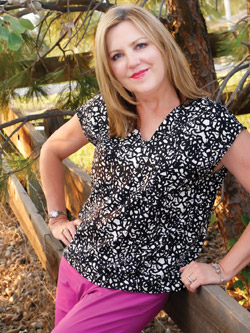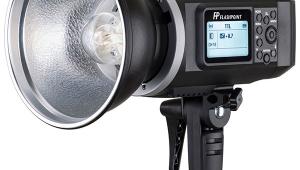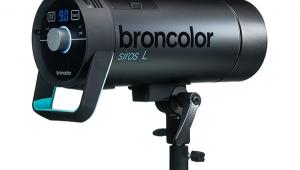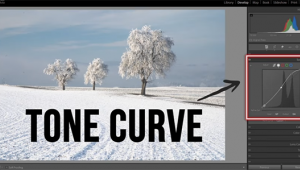Graslon Speedlight Lighting Modifiers: It’s All Done With Mirrors
There are lots of companies making speedlight accessories but what makes Graslon’s different from the others are the mirrors. Most speedlight diffusers work in a similar way: translucent material is placed in front of the flash head to scatter light and soften shadows, but many times that light doesn’t scatter and some gets lost. Graslon’s Flash Diffusers use a series of patent-pending mirrors that enlarge the light source before sending it through the diffuser. This allows the light to travel to the corners of the diffuser so that light coming through the diffuser is balanced and, well, diffuse. Two types of diffusers, or lenses, as Graslon prefers to call them, are available: the dome spreads the light everywhere (think bare-bulb effect) to take advantage of bouncing light off walls and ceilings; the flat lens is more directional and useful when you’re using the flash as fill in no-bounce situations. Much like a Zeiss Softar filter it’s covered in hundreds of mini-lenses or bumps that spread the light evenly across its surface.





The Prodigy ($99.95) uses its proprietary optical reflector system to redistribute the light from the speedlight before firing it through a diffusion lens to soften edges, reduce shadows, and create a natural-looking photograph. Instead of using adhesives or hook-and-loop fasteners, the Prodigy is designed to fit most Canon, Nikon, Sony, Metz, Olympus, Pentax, Sigma, and other company’s speedlights by using a rigid sliding-and-locking mounting bracket that is tightened using a touch fastener-covered belt. This makes for a snug fit but also lets you easily remove the device. The Prodigy is available with either a flat or dome lens but additional lenses are available separately and are interchangeable with the bundled model.

© Joe Farace
The Prodigy has a 5x8” front lens (diffuser), while the front end of Graslon’s Insight ($69.95) measures 4x6”, making it suitable for smaller speedlights. Like the Prodigy, it’s available with a flat or dome lens to soften edges, reduce shadows, and produce soft lighting. The Insight uses the same kind of sliding-and-locking mounting bracket as its sibling to fasten the device to the speedlight. Included in the package is a rear cap that snaps onto the back of the Insight (or Prodigy), making it easy to store in a camera bag to protect the mirrored surfaces and keep dirt and dust from getting into the housing. It’s a nice detail that shows how much thought Graslon put into the system.

© Mary Farace
Although I didn’t get to test one, Graslon offers amber-colored lenses for the Prodigy and Insight in both flat and domed versions, and while they claim that the devices can “take beautiful pictures in all sorts of situations,” I’ll bet they would be perfect when photographing under tungsten light by matching the color of your speedlight to the color of the ambient lighting. Priced at $19.95 for the Insight and $29.95 for the Prodigy, these practical accessories won’t break your piggy bank.

© Joe Farace
Graslon hasn’t forgotten pop-up flash users either: the Spark ($39.95) slips onto your SLR’s hot shoe and is designed not to block the pop-up flash from functioning. To compensate for the way the dome spreads light, the Spark may require you to increase flash exposure compensation between 1 to 1 1/3 stops. Let your histogram be your guide. As always when trying a new lighting technique and device, be sure to shoot a test before trying it on a paying client or an important shoot.
Out In The Real World
The first of the three devices I tried was the Spark and after mounting it on a Canon EOS 60D it looked cool. The Spark is designed to fit Canon, Nikon, and Olympus hot shoes but won’t (sorry) work with Sony or Minolta SLRs. The preferred mounting method is to attach the diffusion dome and simply slide the Spark onto the hot shoe, but I found it was easier to place the dome on after the unit was attached to the camera.

Photos © Joe Farace



Tip: Putting on the dome itself may seem tricky at first but the best way I found is to line up its bottom edge with the housing and snap the top on. If you decide to shoot a few images without flash, you don’t have to dismount the Spark. Just push the flash head down through a hole located in the top rear of the Spark.
I tested the Insight by photographing Amber Nicholson in a foyer and while there are nearby walls for some bounce effect, the ceiling height where she’s posed varies so I used the flat diffuser lens, as you can see in the illustration. For my Canon EOS 60D and 550EX flash, no exposure or flash compensation was needed. What you see was what I got by simply placing the camera in Program mode and the flash in E-TTL. Bang-zoom, perfect exposure. Your combination of camera, flash, and expectations may be different, so do a few tests before using the Insight to photograph your niece’s wedding.
The Spark will fit many cameras with hot shoes and pop-up flashes, but not all. Graslon doesn’t claim it will work with Pentax SLRs, but I tried it anyway. It was a snug fit but would not allow the flash to fully extend upward and consequently wouldn’t fire. As I write this, Graslon also says that the Spark “does not fit Sony or Four Thirds format cameras” but I wouldn’t be surprised to see one arrive real soon now.
Because I think the tiny flashes found on these small cameras would really benefit from diffusion (bigger source=softer light), I decided to try the Spark on a Panasonic Micro Four Thirds system camera that is the same size as the diffuser! It worked perfectly because the flash could extend upward within the Spark and I could even use the hole in the back to push the flash head back into place on a Lumix G5. The results were wonderfully natural. Again, sticking with the recommended cameras is always a good bet.

© Joe Farace
I decided to test the Prodigy under the kind of condition where I wouldn’t normally shoot—with a subject really close to the wall. When using on-camera flash to photograph people I prefer to place them as far away from the wall as they are tall to minimize annoying shadows on the background. Any shadows on the wall are a direct result of having the flash being too close to the lens but having the flash too high can produce vignetting.
For testing, I placed Mary less than a foot from a white wall. The first shot was with the undiffused light from a Canon 580EX II Speedlite mounted on the hot shoe of a Canon EOS 60D; the second with the Prodigy and flat diffuser; and the third with the dome diffuser to pick up some light bounced off the ceiling. My take: both flat and dome lenses produce much better lighting than the raw speedlight output. Wedding and event shooters will prefer the dome for smaller rooms where bounce off the ceiling can be used to enhance the look of the photographs, while the flat lens is a better choice for bigger open areas, such as the interiors of churches and synagogues.
To be honest, I had never heard of Graslon before working on this “Test Report” but it is obvious that its founder, Dan Naramor, has taken the world of speedlight diffusers in new and better directions by producing clever and useful products. One of the three different models—Prodigy, Insight, and Spark—should fit the kind of speedlight photography that you do, and with prices from $39.95 to $99.95 are affordable as well. Wedding and event photographers will like the additional output from these mirrored devices while producing soft flattering light without having to set up additional lighting gear. It’s a perfect accessory for the shoot-and-scoot photographer.
For more information, contact Graslon at: www.graslon.com.
- Log in or register to post comments
















































